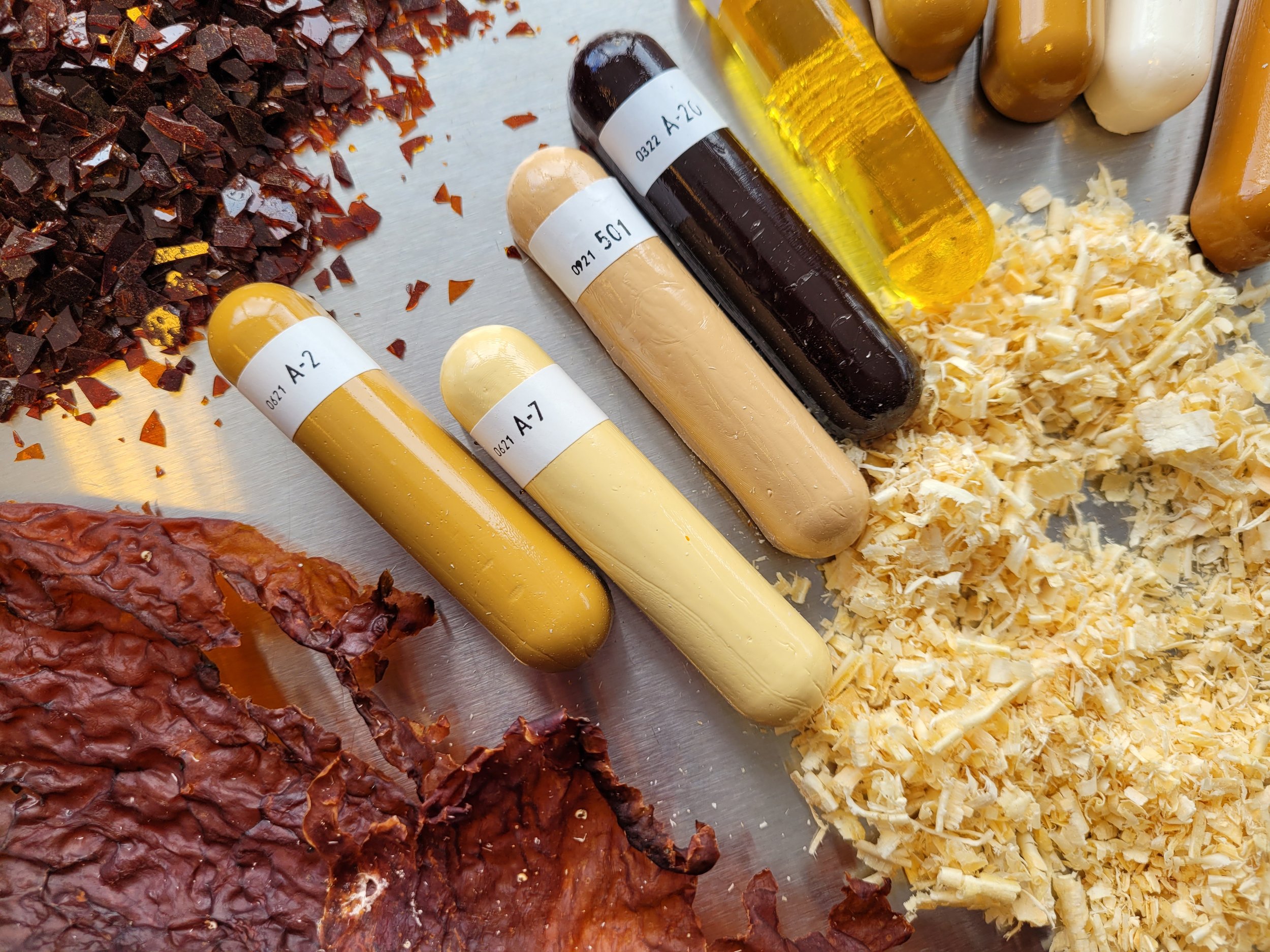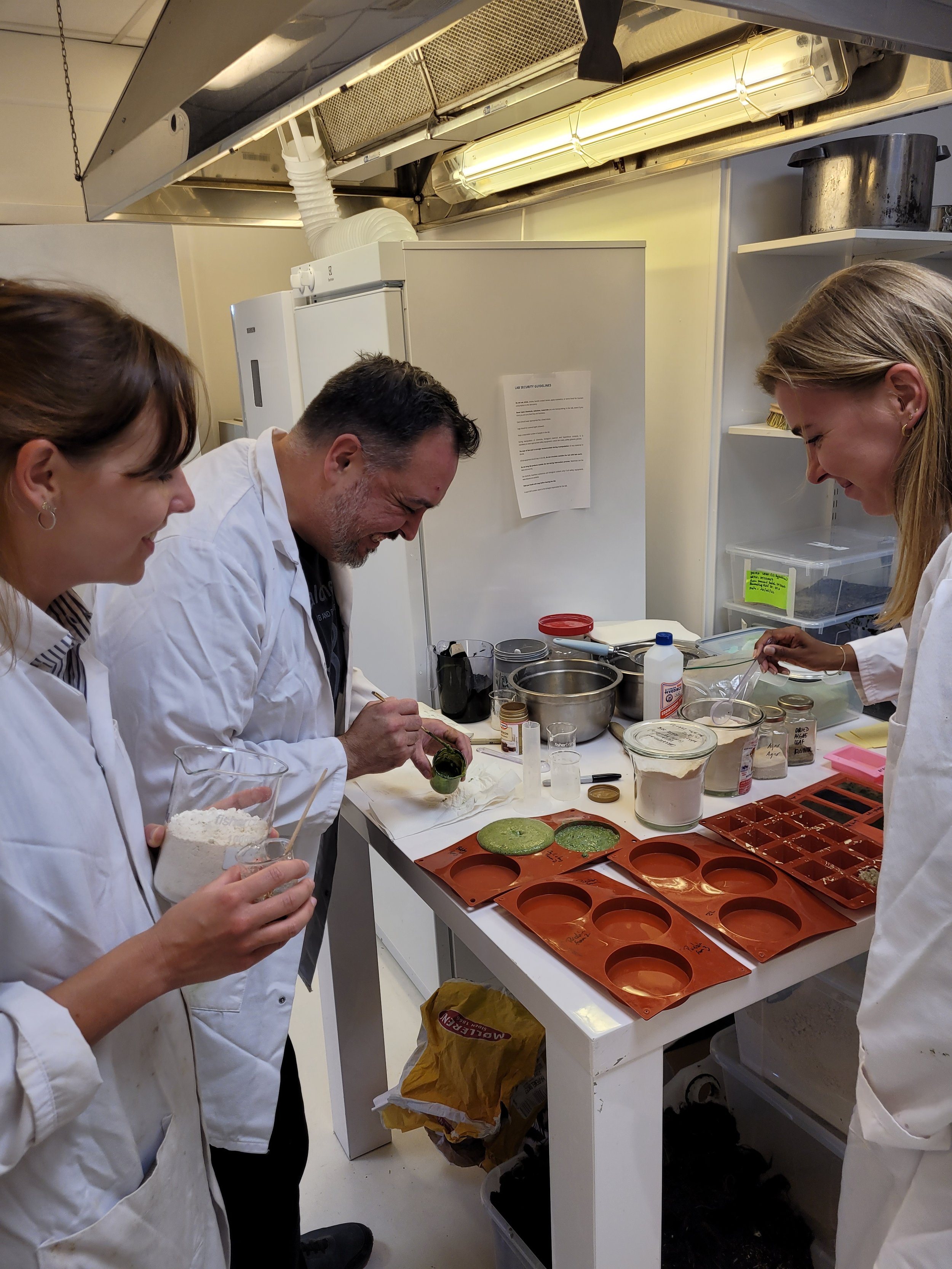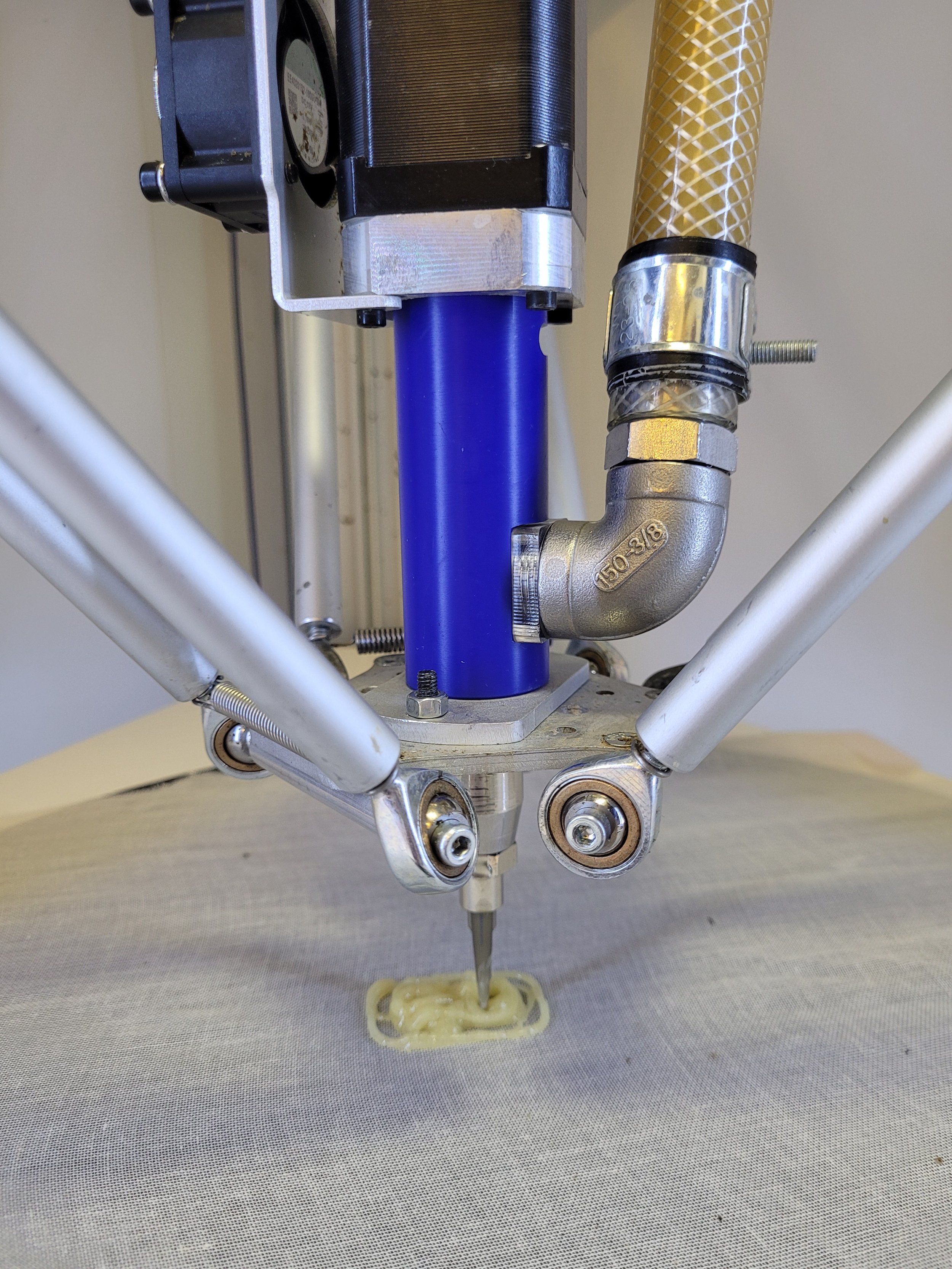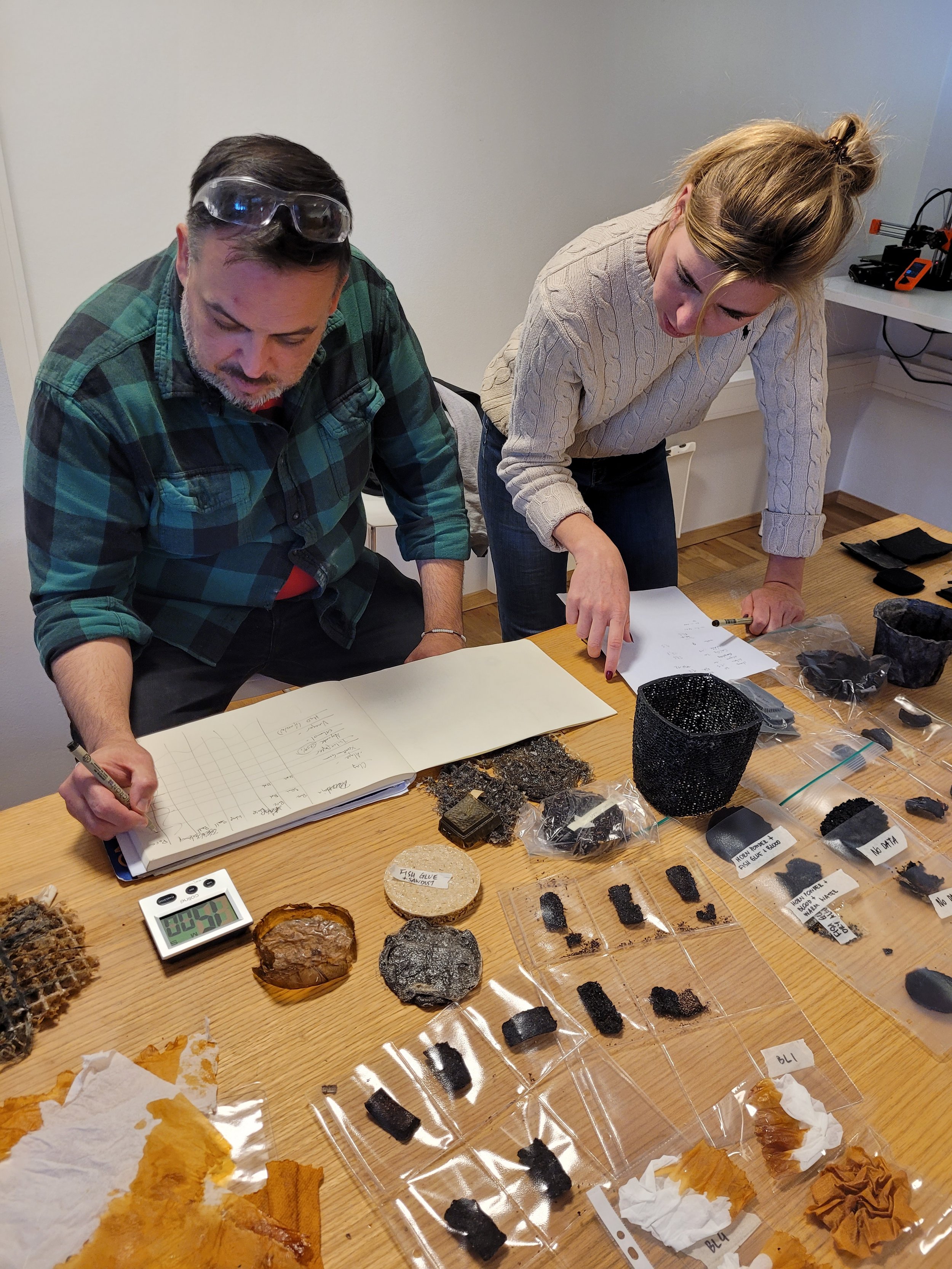BioDeepMap
BioDeepMap is a pilot project bringing competence across crafts, art and design together with scientific expertise to produce knowledge for a new and more sustainable materiality. The pilot project includes the development of a method and program for the deep mapping of bioresources for artistic research-based activities and innovative material development in a historical and a future-oriented context.
The project brought together seven artists and designers that have material expertise to work on material innovation with other disciplines within the sciences and humanities. Through three modules comprising six workshops, the participants used different residual organic raw material to explore the properties, aesthetics, and potential of bio-based materials. After the completion of the three modules, the participants present their work at the BioDeepMap exhibition, opening on the 23 of May 2024 at Bioregion Institute.
The Participating Artist and Designers
Tone Andersen is an artist working with ceramics and technology, with a special interest in materials that offer both aesthetic and ecological benefits. Specializing in metal and jewelry, Shitika Agrawal combines her interests in function and fantasy, with the aim to create pieces of artwork that not only can be represented on their own as hybrid sculptural objects but can be functional body jewelry such as face masks and body armor. Hildegunn Solbø is an artist working with varied hard materials and printmaking with focus on non-toxic graphic printing techniques without the use of solvents or chemicals. Accessory designer Michelle Lowe Holder has focused on recycling and upcycling with handcraft for the past decade, and is now working to include regeneration and closed loop creation in her designs. With glass casting as a basis, Inge Lauwers works with 2D and 3D techniques, and is keen to explore what biomaterials can express and what limits can be pushed beyond the expectations of what is possible. With emphasis on the process, Joe Welch researches the usage of experimental clay that retains an amorphous quality and resists traditional building methods. A trained nurse and architect student, Hanna Stenslet is passionate about creating environments with natural materials that foster well-being and is interested in the artistic and technical aspects of biomaterials based on local resources and traditions.
Bringing in Expertise from the Sciences and Humanities
Drawing upon diverse expertise in art, design, science, and history, BioDeepMap explores the potential of biomaterials through artistic processes, knowledge sharing, and sustainable material development. Through module-based collaborative workshops and events at the Bioregion Institute, international, national, and local networks have formed. The approach involves interdisciplinary collaboration, wherein artists and designers collaborate with specialists in archaeology, biology, chemistry, tanning, algae biomaterials, and 3D printing. Through interdisciplinary collaboration, novel artistic material expressions were explored.
Module 1: Binder from biological biomass and animal raw materials
Addressing environmental issues surrounding hybrid biomaterials that use fossil-based binders, this module explores artisanal and historical animal binders. Materials such as bone glue, skin glue, horn shaping, ox blood, and various resin alternatives serve as starting points for creating malleable materials. Collaborators of the module are The Museum Center in Hordaland (MUHO) and Morten Kutchera (archaeologist, artisan, practitioner of experimental archaeology).
Cow horn and deer antlers.
Inge Lauwers (left) and Michelle Lowe Holder (right) during a workshop held by Morten Kutchera (middle).
Horn is one of the earliest known malleable materials, it can be heated and pressed into a shape.
Horn spoons were part of daily life and was commonly crafted in every household.
Testing new casting and molding techniques.
Different natural tones and patterns seen in horns.
Module 2: Shaping Biomass through Casting, Pressing, and 3D Printing
Utilizing abundant organic raw materials from seafood and agricultural production to minimize environmental impact and reduce food waste, this module combines traditional knowledge from ceramics and foundry with modern technology like 3D printing. Building on binders developed in Module 1, participants use clay, various biomass materials, and the WASP 3D 40100 printer with a manual feeder to shape objects. The module collaborator is Lorenzo Filipponi (WASP) Italy, producer of 3D printers.
Inge Lauwers, Tone Andersen, and Hanna Stenslet casting natural biobinders in the lab.
Michelle Lowe Holder testing blood as a natural binder.
Binder made from fishbone.
Hanna Stenslet and Joe Welch working with marinebiologist Blandine Zaba in the lab.
Natural biodegradable materials from bone glue, shellack, skin glue and sawdust.
Michelle Lowe Holder and Lorenzo Filipponi (WASP) experimenting with new materials in the 3D printer.
3D printed material from fish bone.
Module 3: Naturally tanned leather and algae fiber materials
Some fashion brands offer artificial leather products that are vegan. Many of these are produced with plastic materials or if biomass is used it is often mixed with fossil-based ingredients. This module focuses on creating materials and objects using 100% organic deer and fish leather that is naturally tanned, along with vegan materials derived from algae that are abundant in our region. Collaboration partners include Johannes O. Borge (tanner and chemist), and Karljin Sibbel (NOTPLA).
All tests are studied and logged. Joe Welch (left) Blandine Zaba (right).
Fish leather is prepared for tanning. Both sides are scraped free from membranes and shells, so the tanning ingredients can enter the material.
Skin from Lysing was tanned over night with oak bark.
3D molded leather tests.
Deer leather naturally tanned, bark from spruce, willow and birch are all great for tanning.
Karljin Sibbel (NOTPLA) leading the algae workshop in the lab.
Categories
Artistic research
New knowledge
Delivery
Mapping method
Courses & workshops
Innovative material development
Timeline
2023
Research Team
Siv Støldal
Alexandre Bau
Linda Figueiredo
Birgitta Ralston
Blandine Zaba
Shitika Agrawal
Morten Kutschera
Inge Lauwers
Michelle Lowe-Holder
Hildegunn Solbø
Joe Welch
Lars Haugen Aardal
Tone Megrunn Berge
Hanna Stenslet
Partners
Norwegian Association for Arts and Crafts
Museum Center in Hordaland
Financed by
Arts and Culture Norway





















